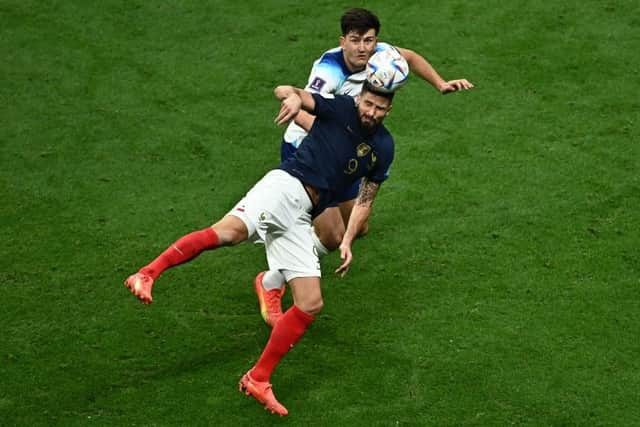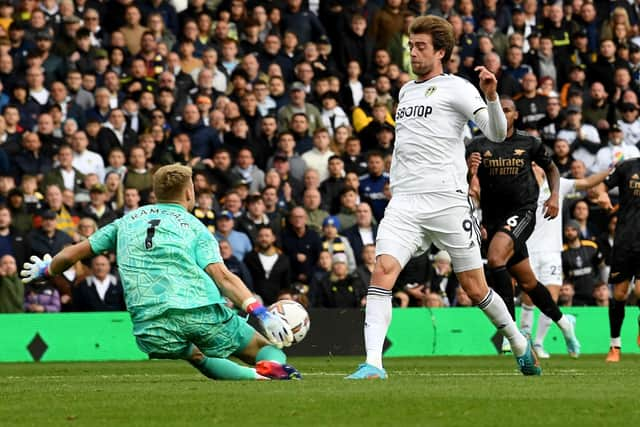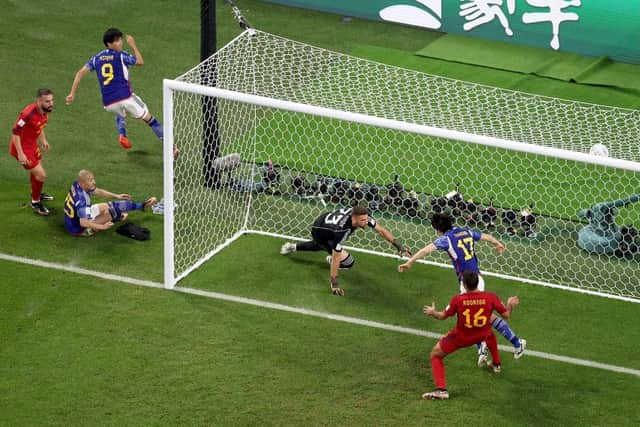What Yorkshire's clubs can learn from 2022 World Cup: 'Tiki-taka' is dying out but old-school centre-forwards are back
With so little preparation time – one international window during the season and some teams kicking off almost as soon as they had shaken the jet-leg out of their heads (sometimes before, it felt) – the opportunity to work on funky new tactics was at a premium in 2022.
Also, cramming so much of 2022-23 in before everyone headed to Qatar in mid-November left countries working with pretty tired bodies. The high-energy pressing game so popular in English football had to largely be put to one side.
Advertisement
Hide AdAdvertisement
Hide AdBoth finalists – Argentina and France – had star players (Lionel Messi and Kylian Mbappe) who do not really do pressing. They wait for the ball to come to them rather than busting a gut to win it back.


Maybe in some respects this World Cup was more a mirror on football than a guide as to how it will change, but there were still some clear patterns emerging Yorkshire’s clubs can learn from.
Back threes are in decline.
Of the 128 World Cup formations analysed by football-lineups.com, the most popular were 4-3-3 (40) and 4-2-3-1 (31). Next was 4-4-2 (16), which had looked on its way out.
England had been expected to revert to three at the back when the going got tough but against France in the quarter-finals, the form of his players almost forced Gareth Southgate to keep his 4-3-3. France won, but they played it as well.
Advertisement
Hide AdAdvertisement
Hide Ad

Argentina switched to three at the back just once – against a Netherlands side who went that way throughout – but generally it was a back-four tournament.
More significantly, Qatar probably hammered a final nail in the coffin of the approach that dominated the last decade – "tiki-taka".
The obsession with possession which drove Spain, then Germany's dominance on the back of the standards Pep Guardiola's astonishing Barcelona side set is losing its lustre.
Even Guardiola has moved away from it. It began five years ago by signing a goalkeeper – Ederson – good at passing the ball long, and Manchester City's purchase of a traditional centre-forward in Erling Haaland was just another step towards a more varied approach.
Advertisement
Hide AdAdvertisement
Hide Ad

Liverpool and Chelsea have always been unafraid to be a bit more direct, and it has served them well.
Neither Germany nor Spain have won a World Cup knockout game since they last lifted the trophy. Belgium, trying to pass teams to death from a 3-4-2-1 base, were very definitely yesterday's men.
Spain raised false hopes by blasting Costa Rica away 7-0 in their opening game, and only scored two more goals all tournament.
Japan were lucky enough to come up against both former winners, and sussed them out. Having settled for just 27 per cent of the ball in beating Germany, they defeated Spain with only 17 per cent – two of the three lowest winning World Cup totals since the anoraks began punching those numbers into databases.
Advertisement
Hide AdAdvertisement
Hide AdLike semi-finalists Croatia and Morocco, Japan sat back, defended well and were deadly on the counter-attack. It worked a treat.
Spain v Germany was like two bald men fighting over a comb until they replaced their "false nines" with genuine centre-forwards. Alvaro Morata and Niclas Fullkrug both scored.
Olivier Giroud made France so much better and Messi flourished once he had Julian Alvarez to play off. The Netherlands only troubled Argentina when they started throwing big strikers off the bench.
The problem is, years of coaching have pushed No 9s to the verge of extinction. Most modern strikers – Rodrigo and Joe Gelhardt at Leeds United, Iliman Ndiaye and Oli McBurnie at Sheffield United, England's Harry Kane – would rather drop into midfield than lead the line like Haaland or Giroud. The others prefer to cut in from wide.
Advertisement
Hide AdAdvertisement
Hide AdValuable relics like Patrick Bamford, Billy Sharp, Danny Ward and Jordan Rhodes are nearer the ends of their careers than the beginning.
But for Leeds to prosper, they could do with at least the option of a genuine No 9. It has to be the priority in the January transfer window, as it should have been in the last goodness knows how many.
Back threes can still work – unless you go to ridiculous extremes, there is no such thing as a bad formation – but Sheffield United will have to play theirs very well if they go back up to the Premier League.
At least they mix up their game cleverly. Doncaster Rovers' passing mania and 3-4-2-1 feel a bit too Belgian, but with League Two players.
Advertisement
Hide AdAdvertisement
Hide AdUltimately, it all boils down to players. Well organised defensively in a back four and focused on the counter-attack, Huddersfield Town's Mark Fotheringham follows the Japan/Croatia/Morocco playbook but you can have all the modern thinking you like – the game is about goals, and the Terriers need more players who can score them.